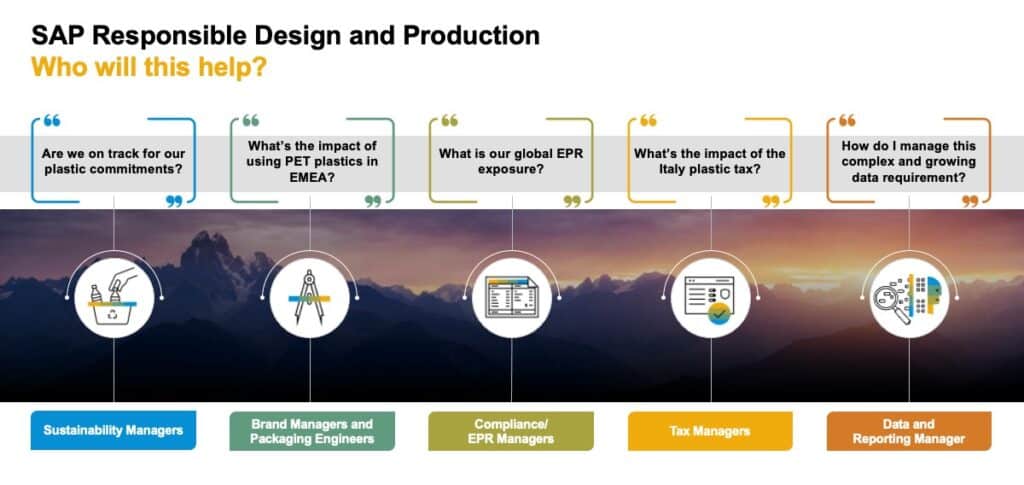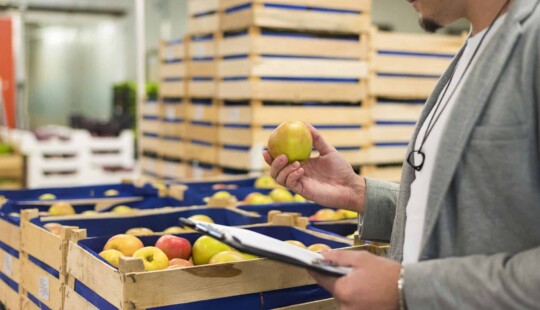The typical understanding of what “design” means to many of us is the way something looks or feels — for example, the look of an iPhone, a movie poster, furniture, or everyday appliances. But what if design was a way of looking at the world with an eye toward changing it?
By adopting a fundamentally different approach in the way we create and design products, services, and solutions we can, for instance, take finite resources to design infinite, regenerative systems that can work sustainably in the long run. In doing so, we can apply circular design as a shorthand for the practice of applying circular economy principles at the design stage of everything and enable the way design changes and redefines our relationship with the world.
Today, we face a devastating pandemic, new levels of global warming, extreme ecological degradation, and continuous setbacks in our work toward global goals for more equitable, inclusive, and sustainable development. Simply put, the state of the planet is broken, where every tenth of a degree of warming matters and those who have done the least to cause the problem are suffering the most.
Making peace with nature is the defining task of the 21st century. With recently concluded COP26, nations, along with businesses, negotiators, and citizens came together to address the burning issue of climate change.
While the focus at COP26 was mostly on climate action, to ensure progress on our sustainability ambitions, we need a systemic approach that looks at the complete big picture. Research from the Ellen MacArthur Foundation finds that our transition to renewable energy “can only address 55% of emissions. The remaining 45% comes from producing the cars, clothes, food, and other products we use every day.”
In acknowledging that ambitious goals require ambitious action, SAP has made its position on what governments need to do at COP26 clear: to take decisive action and provide a mandate to business to drive solutions to achieve our shared global goals.
As a part of our sustainability journey, we believe we can design and provide highly innovative and viable solutions that will not just repair the damage to the earth humans have caused so far, but actually prevent more harm. Eighty percent of a product’s environmental impact is baked in at the time of its design, proving that the only way we can create a successful circular economy is with a focus on how our products are designed, sourced, made, and delivered.
I previously discussed the sustainability portfolio in SAP S/4HANA Cloud and how SAP is addressing four dimensions, including climate action, circular economy, holistic steering and reporting, and social responsibility. SAP has announced the availability of SAP Responsible Design and Production — an embedded, cloud-native SAP S/4HANA solution — to help customers with the sustainable design and responsible management of materials and products so that they can accelerate their transition to a more circular economy.
With SAP Responsible Design and Production, businesses can embed circularity principles into core business processes, helping to eliminate waste, circulate products and materials, and regenerate natural systems to unlock new value. The new solution gives companies better visibility into how materials flow through their processes, including tracking and complying with rapidly changing regulations for things like packaging and plastics.
They can also keep pace with increasingly strict regulations like extended producer responsibility standards, which can put significant financial and physical responsibility on the company about how they manage the disposal of their products. These standards differ across regions and countries. For example, a shampoo brand manager has visibility into the full product life cycle, including extended producer responsibility obligations and the plastic taxes of different markets. These costs can be very expensive. This visibility helps the brand manager make design changes to eliminate waste and decisions on how to reduce the costs of re-use and recycling systems.
 Technology solutions like SAP Responsible Design and Production are a fundamental step in enabling businesses to become intelligent, sustainable enterprises and drive global impact at scale. But business should not commit only to doing less harm, but to doing more good. Business has the power to not only reduce and reuse, but also to regenerate. We need to go from seeking to reduce our ecological footprint and “chasing zero,” to becoming net- or nature-positive, building not just a circular economy, but a regenerative economy.
Technology solutions like SAP Responsible Design and Production are a fundamental step in enabling businesses to become intelligent, sustainable enterprises and drive global impact at scale. But business should not commit only to doing less harm, but to doing more good. Business has the power to not only reduce and reuse, but also to regenerate. We need to go from seeking to reduce our ecological footprint and “chasing zero,” to becoming net- or nature-positive, building not just a circular economy, but a regenerative economy.
The regenerative economy implies a circular approach beyond the narrow view of products to one that includes the social, natural, and built environment. It is an approach similar to natural ecosystems that find synergies and balance. The regenerative business is intelligent, using innovative technology to gather insight and apply it to scale change. It measures impact, holistically and in real time.
Cementing Partnerships to Drive Corporate Sustainability and Circularity
Accenture shares SAP’s vision of zero emissions, zero waste, and zero inequality. To achieve a sustainable world, organizations must transform into intelligent enterprises, and intelligent enterprises must form a network of intelligent enterprises.
In addition to the accepted top line and bottom line, a new “green line” covering the environmental, social, and governance aspects needs to be established as another dimension of success across business processes and along value chains. This way, organizations achieve transparency and influence that span beyond company borders.
The recently published United Nations Global Compact–Accenture CEO Sustainability Study shows that many global industry leaders are already demonstrating behaviors that are critical to achieving a competitive advantage from sustainability. Accenture and SAP are ready to help organizations accelerate in their journeys to become sustainable intelligent enterprises.
According to Peter Lacy, chief responsibility officer and global sustainability services lead at Accenture, “With the circular economy we have an unprecedented opportunity to transform some of the challenges we face into opportunities, creating economic value and sustainability impact for business and society. In fact, our research shows the value at stake is massive: $4.5 trillion of upside, even at conservative estimates. We are proud to partner with SAP to seize the circular advantage, as we believe business can spur innovation, create new markets, and set our current global direction toward one that is more sustainable and resilient.”
Just as the whole is greater than the sum of its parts, SAP and Accenture recently welcomed two new cohorts for the external startup accelerator SAP.iO Foundries North America. Thirteen startups were selected for the cohort among hundreds of applicants by a jury of SAP and Accenture experts, partners, and customers. They are building innovative solutions to drive sustainability for consumer and retail companies across the value chain in areas including reusable packaging, responsible and ethical supply chain, and emphasizing a circular economy.
With the launch of SAP Responsible Design and Production, SAP aims to address two critical challenges: managing complex extended producer responsibility regulations and plastic taxes, which vary from country to country, and enabling every organization to reduce their use of plastic, thereby contributing to sustainable and profitable growth through less plastic and less exposure to regulatory costs.
Because SAP Responsible Design and Production directly leverages data from core enterprise resource planning (ERP) processes, it enables determining material compositions and calculating extended producer responsibility fees across numerous product lines as well as adhering to a growing number of different extended producer responsibility declaration schemes.
To date, we have four clients testing the beta version of the new solution, released at the end of August, and they will be closely involved in assessing new releases. We are co-innovating with many of the world’s largest consumer products organizations in the solution development to support long-term industry success and delivery of the zero waste ambition.
To this end, our joint teams are ready to deliver. We are helping our clients to define their road maps, identify priorities, and accelerate their journeys through the selection and implementation of relevant SAP S/4HANA Cloud capabilities and new SAP solutions. Our sustainability management portfolio is enabled by a modular SAP S/4HANA Cloud, helping us to drive a positive planetary impact in a holistic manner while incrementally expanding it along further aspects, including water, energy, land use, and social dimensions.
When sustainability is embedded in its DNA, building software that helps companies measure, account, and take the right action in dynamic and heterogeneous environments is the final step in managing environmental impact.
As Sir David Attenborough rightly said, “If working apart we are a force powerful to destabilize our planet, surely working together we are powerful enough to save it,” before concluding, “In my lifetime I’ve witnessed a terrible decline. In yours, you could and should witness a wonderful recovery.”
Jan Gilg is president of SAP S/4HANA.



